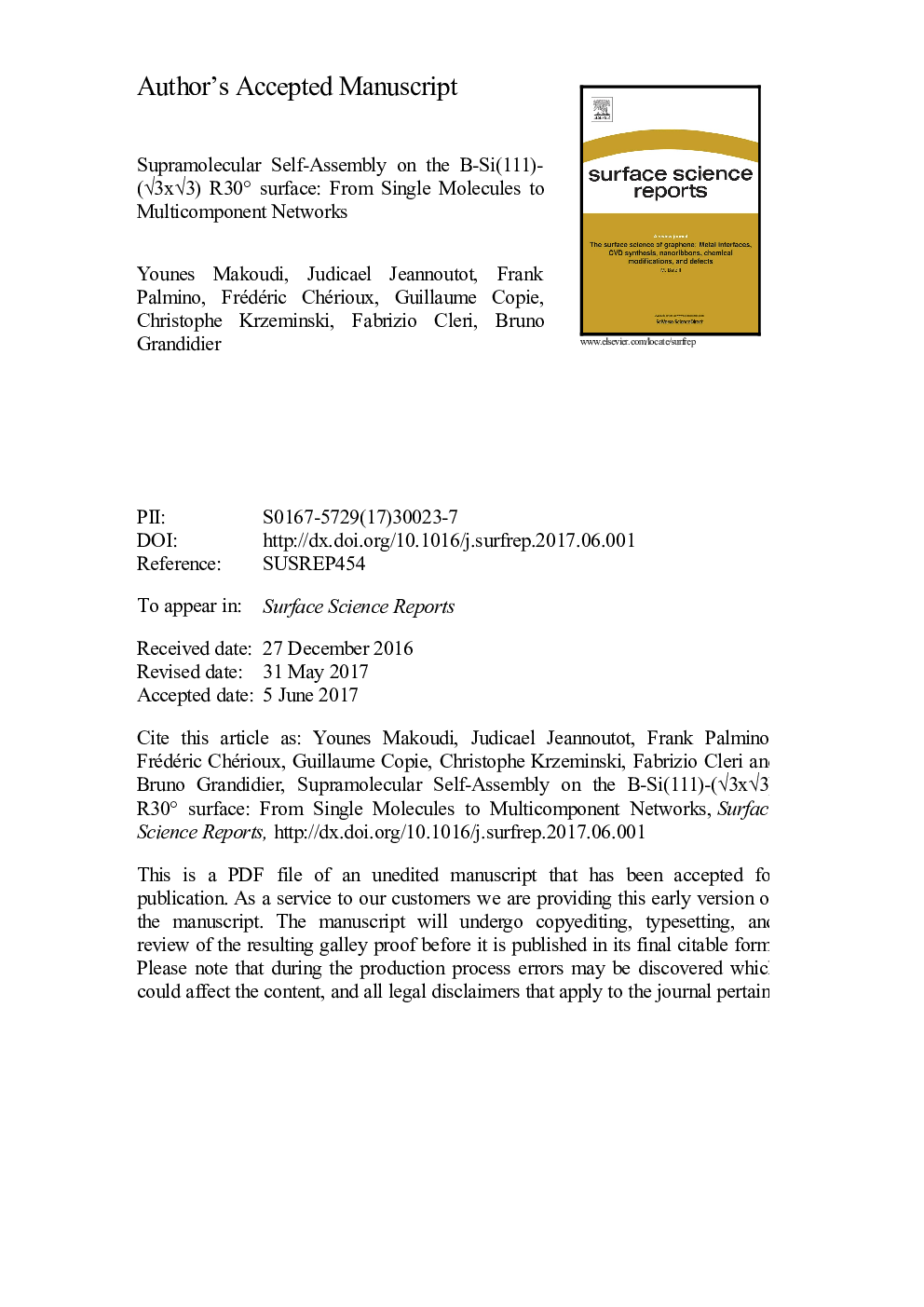| Article ID | Journal | Published Year | Pages | File Type |
|---|---|---|---|---|
| 7844997 | Surface Science Reports | 2017 | 49 Pages |
Abstract
Understanding the physical and chemical processes in which local interactions lead to ordered structures is of particular relevance to the realization of supramolecular architectures on surfaces. While spectacular patterns have been demonstrated on metal surfaces, there have been fewer studies of the spontaneous organization of supramolecular networks on semiconductor surfaces, where the formation of covalent bonds between organics and adatoms usually hamper the diffusion of molecules and their subsequent interactions with each other. However, the saturation of the dangling bonds at a semiconductor surface is known to make them inert and offers a unique way for the engineering of molecular patterns on these surfaces. This review describes the physicochemical properties of the passivated B-Si(111)-(â3xâ3) R30° surface, that enable the self-assembly of molecules into a rich variety of extended and regular structures on silicon. Particular attention is given to computational methods based on multi-scale simulations that allow to rationalize the relative contribution of the dispersion forces involved in the self-assembled networks observed with scanning tunneling microscopy. A summary of state of the art studies, where a fine tuning of the molecular network topology has been achieved, sheds light on new frontiers for exploiting the construction of supramolecular structures on semiconductor surfaces.
Keywords
Related Topics
Physical Sciences and Engineering
Chemistry
Physical and Theoretical Chemistry
Authors
Younes Makoudi, Judicaël Jeannoutot, Frank Palmino, Frédéric Chérioux, Guillaume Copie, Christophe Krzeminski, Fabrizio Cleri, Bruno Grandidier,
